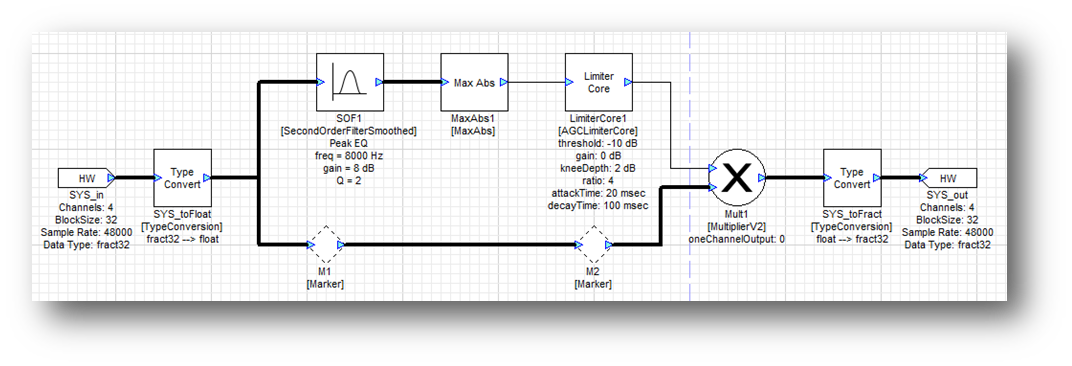Microphone De-essing Example
A common complaint of microphone recordings is that the sibilant sounds (“s”, “z”, and “sh”) are too prominent and harsh. This is because the microphone is very close to the talker and picks up more of these high frequencies. The problem area is in the range from 4 kHz to 10 kHz and depends on the talker. A fairly common frequency to concentrate on is around 8 kHz. An overview of the problem and approaches can be found at http://en.wikipedia.org/wiki/De-essing .
Broadband De-Essing
In the broadband approach the entire signal level is reduced when harsh high frequencies are detected. A standard AGCLimiterCore can be used with a sidechain EQ which accentuates the 8 kHz problem frequencies.

The downside of this approach is that when sibilants are detected the gain of the entire signal is reduced; this is not ideal.
Split Band De-Essing
One improvement is to use a crossover and treat sibilant and non-sibilant frequencies separately. A 2-way crossover with a cutoff frequency of 6 kHz is used. A limiter then acts on the high frequency signals and reduces the gain, if necessary; the low frequencies are untouched.

Dynamic Equalizing De-Essing
It is still possible to do better. In the Split Band De-essing all signals above 6 kHz are reduced in gain if sibilants are detecting. The design below is even more precise. A bandpass filter around 8 kHz detects sibilants.

The output of the bandpass filter drives a limiter core and this in turn reduces the gain of a controllable second order peak filter. This limits the gain reduction to the range of frequencies from 6 to 10 kHz. The entire system is shown below:
